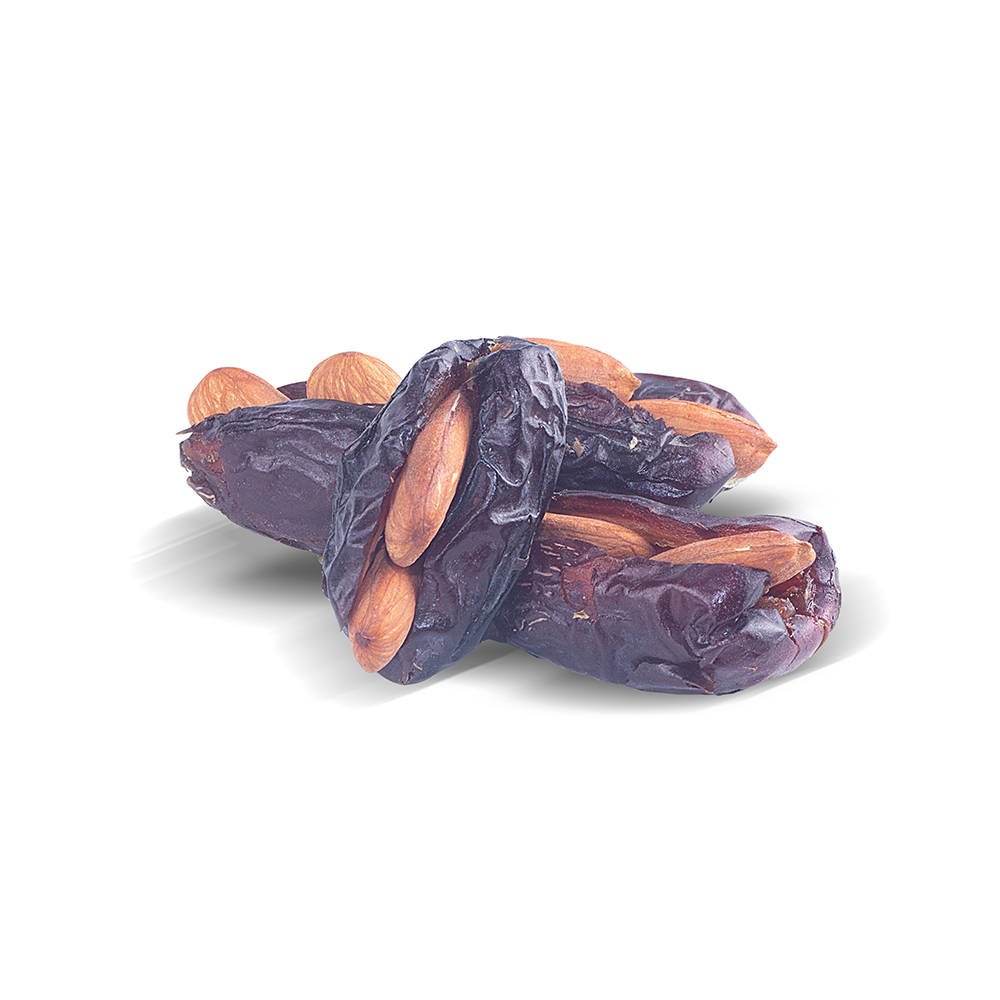Health
Exploring the Benefits and Uses of Kingymab in Our Daily Lives

1. What is Kingymab?
Kingymab is a novel therapeutic agent designed for a variety of health conditions. It is primarily recognized for its effectiveness in managing autoimmune disorders and certain types of cancers. Kingymab works by targeting specific proteins or cells involved in these diseases, helping to regulate the immune response or inhibit the growth of cancer cells.
2. How does Kingymab work?
Kingymab functions as a monoclonal antibody that binds to specific targets in the body. For autoimmune diseases, it helps modulate the immune system to reduce inflammation and tissue damage. For cancer, it targets and destroys cancer cells or inhibits their growth by blocking the signals that promote their proliferation.
3. What are the main benefits of using Kingymab?
- Effective Disease Management: Kingymab has shown significant efficacy in managing autoimmune conditions such as rheumatoid arthritis and certain cancers, improving patient outcomes and quality of life.
- Reduced Symptoms: Patients may experience a reduction in symptoms like pain, swelling, and fatigue, leading to a more active and fulfilling life.
- Targeted Therapy: Kingymab’s precision in targeting specific cells or proteins minimizes damage to healthy tissues, which can result in fewer side effects compared to traditional treatments.
4. How can Kingymab be used in daily life?
- Medical Treatments: For those with prescribed conditions, Kingymab is used according to a healthcare provider’s instructions. Regular administration, whether through injections or infusions, becomes part of the patient’s routine.
- Lifestyle Adjustments: Patients may need to adapt their daily routines to accommodate treatment schedules and manage any potential side effects. This could include adjustments in diet, exercise, and rest.
- Monitoring Health: Regular check-ups and monitoring are essential to assess the effectiveness of Kingymab and make any necessary adjustments to the treatment plan.
5. Are there any common side effects of Kingymab?
Like all medications, Kingymab can have side effects. Common ones might include:
- Injection Site Reactions: Pain, redness, or swelling at the site of injection.
- Flu-like Symptoms: Fever, chills, or fatigue may occur after treatment.
- Gastrointestinal Issues: Nausea, diarrhea, or abdominal discomfort.
It is important to discuss potential side effects with your healthcare provider to manage them effectively.
6. Can Kingymab be used alongside other medications?
Kingymab may be used in conjunction with other medications, but it is crucial to consult with your healthcare provider about any potential interactions. Your provider will tailor the treatment plan to your specific needs and monitor for any adverse effects from combining therapies.
7. How should I prepare for a Kingymab treatment?
Preparation for Kingymab treatment generally involves:
- Pre-Treatment Assessment: Your healthcare provider will assess your overall health, medical history, and any existing conditions to determine the suitability of Kingymab.
- Understanding the Procedure: Learn about the treatment process, including how and when Kingymab will be administered.
- Discussing Lifestyle Impact: Consider how treatment may impact your daily life and plan accordingly.
8. Where can I find more information about Kingymab?
For more detailed information, consult your healthcare provider or visit reputable medical websites and resources. Patient support groups and organizations related to your condition can also offer valuable insights and experiences regarding Kingymab.
In recent years, advancements in biotechnology have led to the development of innovative treatments that offer new hope for individuals grappling with chronic and complex health conditions. One such breakthrough is Kingymab, a cutting-edge monoclonal antibody designed to tackle autoimmune disorders and certain types of cancers. This article delves into the benefits and practical applications of Kingymab, shedding light on how it can enhance daily living for those it helps.
Understanding Kingymab
Kingymab is a monoclonal antibody, a type of protein designed to bind to specific targets in the body. By honing in on particular cells or proteins involved in disease processes, Kingymab helps to modify the immune system’s response or directly interfere with cancer cell growth. This targeted approach offers a more precise method of treatment compared to traditional therapies.
Benefits of Kingymab
- Effective Disease Management
One of the most significant advantages of Kingymab is its efficacy in managing autoimmune disorders such as rheumatoid arthritis, lupus, and certain types of cancer. By targeting specific disease mechanisms, Kingymab helps to reduce the severity of symptoms and improve overall disease control. For patients, this translates into better management of their condition and a noticeable improvement in their quality of life.
- Symptom Relief
Patients receiving Kingymab often report a reduction in debilitating symptoms such as pain, inflammation, and fatigue. This symptom relief enables individuals to engage more fully in daily activities, enhancing their overall well-being. Whether it’s participating in hobbies, pursuing career goals, or spending quality time with loved ones, Kingymab can help restore a sense of normalcy.
- Targeted Therapy with Fewer Side Effects
Traditional treatments for autoimmune disorders and cancer can sometimes cause significant side effects due to their impact on healthy tissues. Kingymab’s targeted approach minimizes damage to non-diseased cells, potentially leading to fewer and less severe side effects. This targeted therapy improves patient comfort and adherence to treatment.
Incorporating Kingymab into Daily Life
- Treatment Routine
For individuals prescribed Kingymab, integrating it into daily life involves adhering to a treatment schedule. This may include regular infusions or injections, which are administered under the guidance of a healthcare professional. Ensuring timely and consistent treatment is crucial for achieving the best outcomes.
- Lifestyle Adjustments
Patients may need to make certain lifestyle adjustments to accommodate their treatment regimen. This could involve scheduling time for medical appointments, managing potential side effects, and balancing treatment with daily responsibilities. Creating a support network of family and friends can also be beneficial in managing the demands of treatment.
- Monitoring and Follow-Up
Regular monitoring is an integral part of using Kingymab. Patients should attend follow-up appointments to track the effectiveness of the treatment and make any necessary adjustments. This ongoing assessment helps to ensure that Kingymab continues to meet the patient’s needs and to address any emerging issues.
- Health Management
Alongside Kingymab treatment, maintaining a healthy lifestyle is important. This includes a balanced diet, regular exercise, and adequate rest. These factors can contribute to better overall health and improve the body’s response to treatment.
Potential Side Effects
While Kingymab is generally well-tolerated, it can cause some side effects. Commonly reported issues include:
- Injection Site Reactions: Pain, redness, or swelling at the site of injection.
- Flu-like Symptoms: Fever, chills, and fatigue, which may occur after treatment.
- Gastrointestinal Discomfort: Nausea or diarrhea.
Discussing potential side effects with a healthcare provider allows for proactive management and adjustment of treatment if needed.
Conclusion
Kingymab represents a significant advancement in the treatment of autoimmune disorders and cancer, offering targeted, effective, and potentially more comfortable therapy for patients. By integrating Kingymab into their daily lives, individuals can experience improved disease management, symptom relief, and overall quality of life. As with any treatment, ongoing communication with healthcare providers and careful management of side effects are key to maximizing the benefits of Kingymab. For those affected by these challenging conditions, Kingymab provides a promising option in the quest for better health and well-being.
Health
Ancient Grains for Breakfast: A Nutritious Start to Your Day

Breakfast is often called the most important meal of the day, and for good reason. A balanced breakfast can set the tone for the rest of your day, providing the energy and nutrients needed to start your morning right. In recent years, ancient grains have become a popular choice for breakfast, thanks to their rich nutritional profile and unique flavors. But what exactly are ancient grains, and why should you consider incorporating them into your morning routine?
What Are Ancient Grains?
Ancient grains are a group of cereals and seeds that have remained relatively unchanged for thousands of years. Unlike modern grains, such as wheat and corn, which have been heavily modified through selective breeding to increase yield and improve resistance to pests, ancient grains retain their original genetic composition. Some of the most well-known ancient grains include quinoa, spelt, farro, millet, amaranth, teff, barley, and kamut.
These grains have been cultivated for centuries by various civilizations and have recently gained popularity due to their health benefits, sustainable growth practices, and versatility in the kitchen.
The Nutritional Benefits of Ancient Grains
One of the key reasons ancient grains are gaining traction as a breakfast option is their exceptional nutritional value. They are packed with essential nutrients, including:
- Fiber: Most ancient grains are high in dietary fiber, which aids in digestion and helps maintain a healthy gut. A fiber-rich diet can also contribute to lower cholesterol levels and better blood sugar control.
- Protein: Many ancient grains, such as quinoa and amaranth, contain more protein than typical grains like rice or corn. Quinoa, in particular, is considered a complete protein, meaning it contains all nine essential amino acids that the body cannot produce on its own.
- Vitamins and Minerals: Ancient grains are excellent sources of vital vitamins and minerals, including iron, magnesium, potassium, and B vitamins, which are crucial for energy production and maintaining overall health.
- Antioxidants: Some ancient grains, such as teff and millet, contain higher levels of antioxidants than modern grains. Antioxidants help protect the body from oxidative stress and reduce inflammation.
Why Choose Ancient Grains for Breakfast?
Choosing ancient grains for breakfast can be a game-changer for your diet and overall health. Here are several reasons to consider incorporating them into your morning routine:
- Balanced Nutrition: Ancient grains provide a balanced combination of complex carbohydrates, protein, and healthy fats. This balance helps maintain energy levels throughout the morning, preventing the mid-morning slump often caused by high-sugar breakfast options.
- Sustained Energy Release: The complex carbohydrates found in ancient grains are digested more slowly than refined grains, providing a sustained release of energy. This slow digestion helps keep you feeling full longer and reduces the urge to snack between meals.
- Gluten-Free Options: For those with gluten sensitivities or celiac disease, several ancient grains, such as quinoa, millet, and amaranth, are naturally gluten-free, offering a safe and nutritious alternative to traditional wheat-based breakfast foods.
- Versatility and Flavor: Ancient grains come in a variety of flavors and textures, making them a versatile addition to your breakfast repertoire. They can be used in a wide range of dishes, from hot porridge to cold grain salads, granola bars, or even smoothies.
Delicious Ways to Enjoy Ancient Grains for Breakfast
There are countless ways to incorporate ancient grains into your breakfast. Here are a few ideas to get you started:
- Ancient Grain Porridge: Start your day with a warm bowl of porridge made from quinoa, farro, or amaranth. Cook the grains in milk or a dairy-free alternative, add a touch of honey or maple syrup for sweetness, and top with fresh fruits, nuts, and seeds for added flavor and nutrition.
- Granola with Ancient Grains: Create a homemade granola mix using a combination of oats, quinoa flakes, millet, and puffed amaranth. Add your favorite nuts, dried fruits, and a sprinkle of cinnamon for a crunchy, nutritious topping for yogurt or smoothie bowls.
- Breakfast Grain Bowls: Combine cooked ancient grains like farro or spelt with sautéed vegetables, a poached egg, and a drizzle of olive oil for a savory breakfast bowl. This protein-packed meal is perfect for those who prefer a hearty, savory start to their day.
- Ancient Grain Pancakes or Waffles: Mix quinoa flour or spelt flour into your pancake or waffle batter for a nutritious twist on a classic breakfast favorite. Top with fresh berries, a dollop of Greek yogurt, and a drizzle of honey for a deliciously healthy morning treat.
The Sustainable Choice
Beyond their nutritional benefits, ancient grains are also a more sustainable option for the environmentally conscious consumer. Many ancient grains are resilient crops that require fewer resources, such as water and pesticides, to grow compared to modern grains. They are often better suited to a variety of growing conditions, including drought-prone areas, making them an excellent choice for sustainable agriculture.
By choosing ancient grains for breakfast, you are not only nourishing your body but also supporting farming practices that are kinder to the planet.
Conclusion
Incorporating ancient grains into your breakfast routine is a simple yet effective way to enhance your diet and support your overall health. With their rich nutrient profile, delicious flavors, and versatility, ancient grains are a wholesome option that can help you start your day on the right foot. Whether you enjoy them in a warm porridge, a crunchy granola, or a savory breakfast bowl, ancient grains offer endless possibilities for a nutritious and satisfying breakfast.
Health
The Nutritional Powerhouse: Exploring the Benefits of Dry Fruits

Dry fruits, often referred to as dried fruits, have long been a staple in various cultures around the world. They offer a convenient and nutritious way to enjoy fruits year-round. This article delves into what dry fruits are, their health benefits, and how to incorporate them into your diet.
What Are Dry Fruits?
Dry fruits are simply fresh fruits that have had most of their water content removed through drying methods. This process concentrates the sugars, flavors, and nutrients, making dry fruits a sweet and nutritious snack. Common examples include raisins (dried grapes), apricots, figs, dates, and prunes.
Nutritional Benefits
- Rich in Vitamins and Minerals
- Iron: Dried apricots and figs are excellent sources of iron, which is crucial for blood health and preventing anemia.
- Potassium: Dates and prunes are high in potassium, which helps maintain healthy blood pressure and supports muscle and nerve function.
- Calcium: Some dry fruits, like figs, offer a good amount of calcium, important for bone health.
- High in Antioxidants
- Dry fruits are rich in antioxidants, which combat free radicals in the body. Antioxidants like flavonoids and polyphenols found in dry fruits can help reduce oxidative stress and inflammation.
- Dietary Fiber
- The drying process retains the fiber content of fruits, which aids in digestion and helps prevent constipation. Fiber also contributes to a feeling of fullness, which can be beneficial for weight management.
- Natural Sweeteners
- Dry fruits are naturally sweet and can be a healthier alternative to refined sugars in recipes. They provide a more complex flavor and additional nutrients compared to processed sweeteners.
Health Benefits
- Digestive Health
- The high fiber content in dry fruits promotes healthy digestion and regular bowel movements. For example, prunes are well-known for their natural laxative effect.
- Energy Boost
- Due to their high natural sugar content, dry fruits are an excellent energy booster. They provide a quick source of energy, making them a great snack for athletes or anyone needing a pick-me-up.
- Heart Health
- Many dry fruits contain heart-healthy nutrients. For instance, dates are rich in potassium, which helps regulate blood pressure and reduce the risk of stroke. Additionally, the antioxidants in dry fruits can contribute to heart health by reducing inflammation and improving cholesterol levels.
- Bone Health
- Certain dry fruits like figs are high in calcium, which is essential for maintaining strong bones and preventing osteoporosis.
Incorporating Dry Fruits into Your Diet
- Snacks
- Dry fruits make a great standalone snack. They are portable, easy to store, and require no preparation.
- Baking
- Add chopped dry fruits to baked goods like muffins, cookies, and bread for natural sweetness and extra texture.
- Salads and Sides
- dry fruits into salads or serve them as a side dish. They add a sweet contrast to savory flavors and increase the dish’s nutritional value.
- Trail Mixes
- Combine dry fruits with nuts and seeds to create a nutritious trail mix. This blend is perfect for a quick snack on the go or a healthy addition to your lunchbox.
- Breakfast
- Stir dry fruits into oatmeal, yogurt, or smoothies for a tasty and nutrient-rich start to your day.
Conclusion
Dry fruits are more than just a convenient snack; they are nutritional powerhouses that offer numerous health benefits. Packed with vitamins, minerals, and antioxidants, they can support overall health, enhance energy levels, and add delightful sweetness to a variety of dishes. By incorporating dry fruits into your diet, you can enjoy their many benefits while savoring their rich flavors.
Health
The Path to Wellness: Embracing Healthy Eating

In today’s fast-paced world, where convenience often trumps nutrition, the idea of healthy eating might seem like a daunting challenge. However, embracing a balanced diet is one of the most effective ways to improve overall health, boost energy levels, and prevent chronic diseases. Healthy eating isn’t about restrictive diets or deprivation; it’s about making informed choices that nourish your body and enhance your well-being.
Understanding Healthy Eating
Healthy eating involves more than just choosing fruits and vegetables over junk food. It’s about understanding the role different nutrients play in your body and how to incorporate them into your daily meals. A well-balanced diet includes:
- Fruits and Vegetables: These should be the cornerstone of your diet. They are rich in essential vitamins, minerals, and fiber. Aim for a variety of colors on your plate to ensure you’re getting a broad spectrum of nutrients.
- Whole Grains: Unlike refined grains, whole grains retain their nutrient-rich bran and germ. Foods like brown rice, quinoa, and whole-wheat products provide fiber, iron, and B vitamins.
- Lean Proteins: Proteins are vital for muscle repair and overall bodily functions. Opt for lean sources such as chicken, turkey, fish, beans, and legumes. Plant-based proteins are also a great choice for those looking to reduce their meat consumption.
- Healthy Fats: Not all fats are created equal. Unsaturated fats, found in avocados, nuts, seeds, and olive oil, can help lower bad cholesterol levels and support heart health. Limit saturated fats and avoid trans fats.
- Dairy or Dairy Alternatives: Dairy products are a good source of calcium and vitamin D, which are crucial for bone health. If you’re lactose intolerant or prefer plant-based options, fortified almond milk or soy milk are excellent alternatives.
Tips for Making Healthier Choices
- Plan Your Meals: Planning ahead helps you make better food choices and avoid the temptation of unhealthy snacks. Creating a weekly meal plan and shopping list can make the process easier.
- Portion Control: Even healthy foods can contribute to weight gain if consumed in large quantities. Be mindful of portion sizes, and listen to your body’s hunger and fullness cues.
- Stay Hydrated: Water is essential for all bodily functions. Aim to drink plenty of water throughout the day, and limit sugary beverages and excessive caffeine.
- Cook at Home: Preparing meals at home gives you control over the ingredients and cooking methods, making it easier to maintain a healthy diet. Experiment with new recipes and cooking techniques to keep meals interesting.
- Read Labels: When purchasing packaged foods, check the nutritional labels. Look for items with lower amounts of added sugars, sodium, and unhealthy fats.
- Mindful Eating: Pay attention to what and when you eat. Avoid eating in front of the TV or computer, and take the time to savor your meals. This can help you enjoy your food more and prevent overeating.
The Benefits of Healthy Eating
Adopting a healthy eating pattern can have profound effects on your overall health. Here are some key benefits:
- Improved Heart Health: A diet rich in fruits, vegetables, whole grains, and healthy fats can help lower the risk of heart disease and stroke.
- Better Weight Management: Eating a balanced diet helps regulate weight by providing essential nutrients and promoting satiety.
- Enhanced Energy Levels: A well-rounded diet supports steady energy levels throughout the day, reducing the likelihood of fatigue and irritability.
- Stronger Immune System: Nutrient-dense foods boost your immune system, making it easier for your body to fight off infections and illnesses.
- Reduced Risk of Chronic Diseases: Healthy eating can lower the risk of developing chronic conditions such as diabetes, hypertension, and certain cancers.
Conclusion
Healthy eating is a lifelong journey rather than a quick fix. By making thoughtful food choices and adopting balanced eating habits, you can pave the way to a healthier, more vibrant life. Remember, small changes can lead to significant improvements over time. Start by incorporating a few healthy habits into your daily routine, and gradually build on them. Your body will thank you for the effort, and you’ll enjoy the many benefits that come with nourishing your health through food.
-

 Games6 months ago
Games6 months agoExploring the Fascinating World of HSNIME
-

 Health6 months ago
Health6 months agoChicken Calories: Exploring Nutritional Benefits and Culinary Versatility
-

 Blog6 months ago
Blog6 months agoUnlocking zVideo: Your Comprehensive Guide
-

 News6 months ago
News6 months agoRai Van: Discover Its Importance In Modern Transportation 2024
-

 Blog6 months ago
Blog6 months agoBlog Arcyart: A Comprehensive and Informative Guide
-

 Fashion6 months ago
Fashion6 months agoYour First Eyelash Extensions Experience Awaits: A Guide to Luscious Lashes
-

 Business6 months ago
Business6 months agoPrince Narula Digital PayPal: Your Ultimate Guide
-

 Games6 months ago
Games6 months agoWhat is Chancerne?
